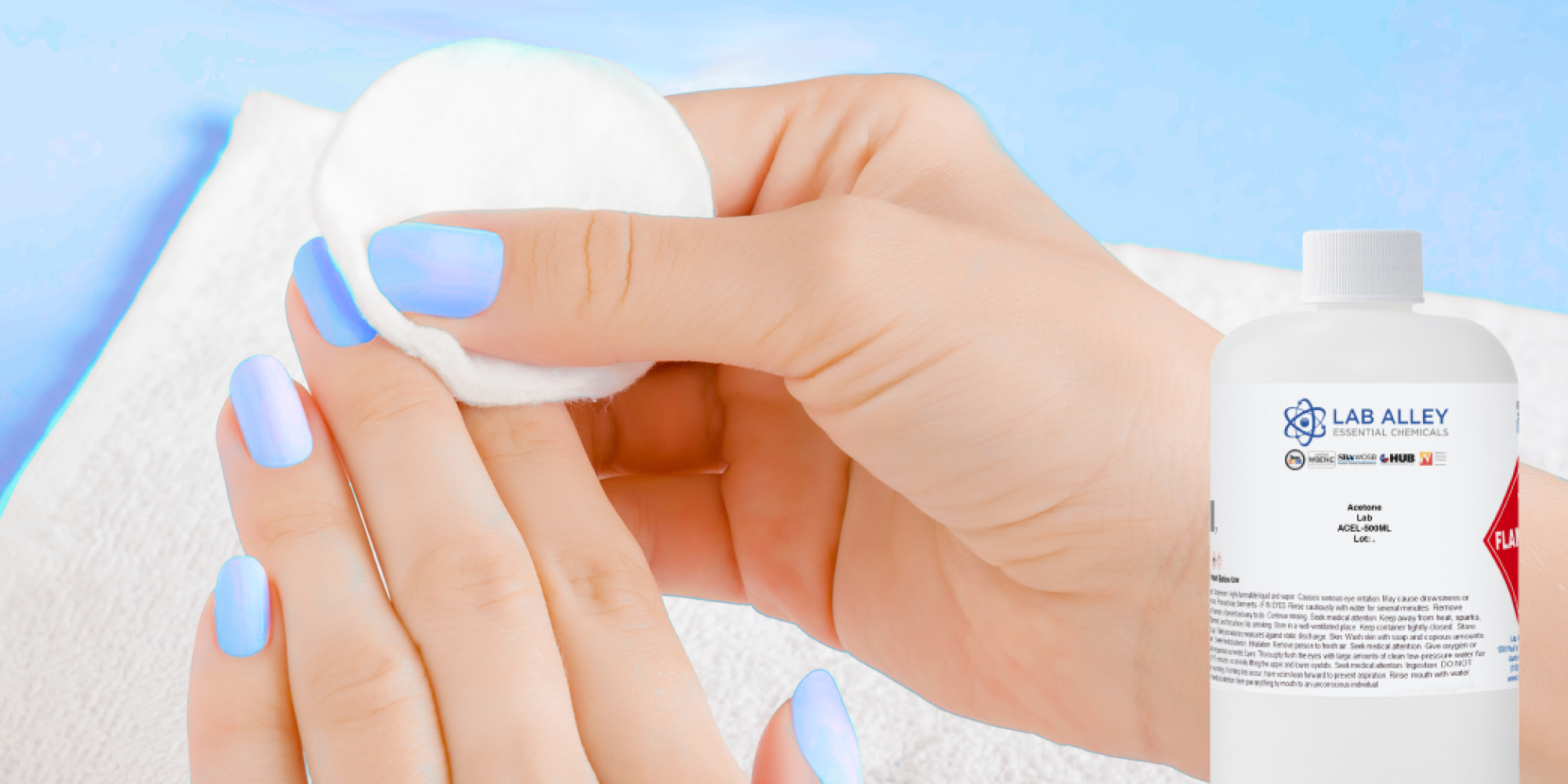Acetone Safety: Proper Storage and Disposal Methods

Acetone is a staple chemical solvent in most laboratories. It is also perhaps one of the most recognizable chemicals to the layperson, best known as the pungent solvent comprising nail polish remover. However, don’t be fooled by the ubiquity or familiarity of acetone. Acetone safety is imperative given its hazardous nature. Acetone, is a class IB flammable liquid, which has critical implications for storage and disposal.
If you’ve used acetone in household concentrations, you may be used to disposing of acetone down the drain. However, if you keep acetone stocked in your laboratory for your business, you are likely dealing with larger quantities. Lab managers should stay abreast of safe disposal practices, as well as best practices for storage and usage. This is essential both for legal compliance, as well as worker and environmental safety.
Although certain regulations may vary by state or jurisdiction, all chemicals come with specifications and a “Material Safety Data Sheet” (MSDS) explaining the storage and handling requirements, along with the associated hazards of that chemical.
In this article, we’ll provide the business owner’s and lab manager’s guide to acetone best practices, including best storage and disposal practices. Always double check with your local regulatory body to be sure your lab complies, as local regulations are often more stringent than national or state regulations.
What is acetone?
Acetone is the common name for dimethyl ketone, a ubiquitous solvent in laboratories as well as everyday household items. It is a clear, colorless liquid with a distinctive sharp odor most commonly associated with nail polish remover or paint thinner. The versatility of this solvent is attributable to its miscibility with water, quick evaporation, and relatively favorable safety profile.
How is acetone used?
We already touched on some of the many formulations in our daily lives that incorporate acetone, such as paints, nail polish remover, cleaning formulations, and superglue. In addition to these, acetone is a convenient solvent for the manufacture of cosmetics, plastics, fibers, pharmaceuticals, and even food packaging. Thanks to its quick evaporation, acetone is often used in manufacturing, but not present in the final product.
Here is a more complete list of formulations and manufacturing processes that may incorporate acetone:
- Cleaning substance
- Food packaging
- Cosmetic formulations
- Superglue component
- Manufacture of plastics and fibers
- Pharmaceutical manufacture
- Paint remover
- Paint thinner
How to safely dispose of acetone
Laboratories and businesses that keep acetone in their inventory need to practice safe disposal. Regulations may vary by country, state, and down to more local jurisdictions. Local jurisdictions may have regulations that are more stringent compared to state or national levels.
Acetone intended for disposal needs to be picked up by your laboratory’s licensed chemical waste disposal firm. Usually, this entails storing waste acetone in a used solvent bottle that has been relabeled as waste, with a detailed list of the compatible waste chemicals included. Pick-up is then scheduled with the waste disposal company in a timely manner. The waste must be appropriately stored in the meantime.
Chemical waste disposal can be an expensive process. It is important to minimize chemical waste in order to minimize lab expenses, while also ensuring employee and environmental safety. One way to minimize waste is to keep careful inventory of all chemical reagents and always comply with best storage practices, as we’ll discuss in the next section.
How to safely store acetone
Best storage practices should account for both the degradation of the chemical reagent, as well as worker safety.
Regarding the first measure, acetone is a highly stable compound, and should last indefinitely if stored properly.
With respect to safety, the primary safety concern with acetone is its flammability. Acetone should be stored in a flammable-proof cabinet. Additionally, acetone should never be exposed to heat or ignition sources. While acetone need not be refrigerated, it should be stored in a cool and dry environment.
Finally, acetone must be stored away from any incompatible chemicals. The main chemical classes that are incompatible with acetone include the following:
- Oxidizers
- Chloroform
- Chromic anhydride
- Hydrogen peroxide
- Nitric compounds
- Acids
Where to buy acetone
Ready to restock? Lab Alley is pleased to provide you with the highest quality, sustainably-sourced acetone for your industry needs. When you shop on our easy-to-use website, you’ll enjoy multiple sizing and concentration options, transparent pricing, no-hassle ordering, and fast delivery. Lab Alley is proud to be your partner in chemical supply.

